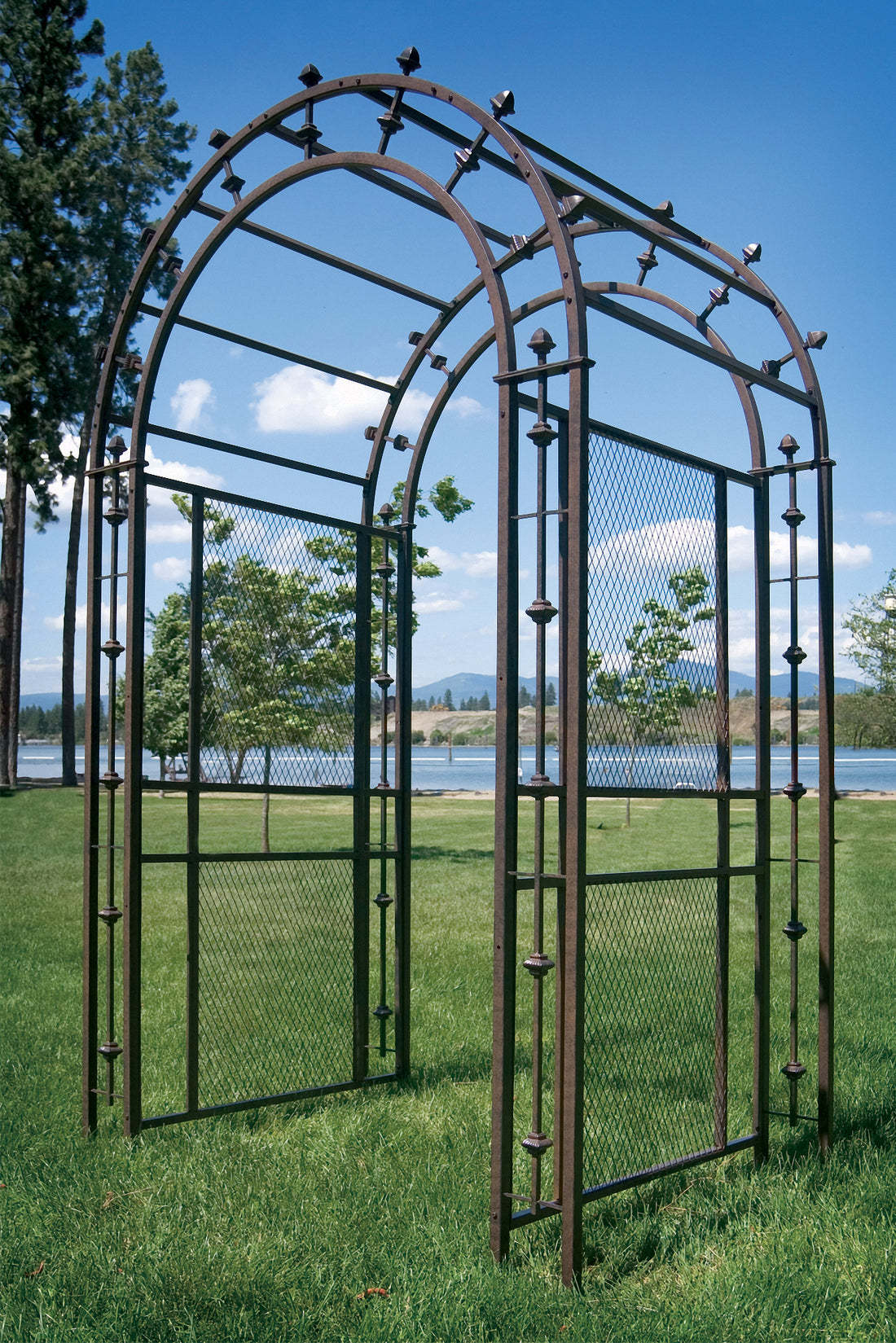Growing Structures For The Backyard
The garden and backyard are home to a number of different objects and tools that make the maintenance and enjoyment of these spaces easier for the gardener or homeowner. These items can often be divided into a handful of common groups depending on their function and similar designs. Some of these more popular categories are garden containers, garden decor, and garden structures. Each of these different groups will have something to add to the garden and will provide a different place for guests to gather and different types of plants to grow.
Types of Gardening Categories
Within each group of popular garden categories, there is a great number of varying styles and each type can have a seemingly infinite amount of designs and purposes, being geared towards different plants, gardeners, and climates. It seems impossible to approach all three of these categories, so in this article we will primarily focus on gardening structures that are present and will make your garden stand out.
Defining A Garden Structure
What exactly is a garden structure? Due to the large number of items that can fall into this category, the name does not exactly pinpoint the exact objects we are talking about. However, we think that it is possible to divide this classification into 4 primary groups that will take up vertical space and depth in the garden, often being something that the garden can surround as a focal point and that will support the weight of larger plants and climbers. These 4 primary groups that we will cover in this article include; trellises, obelisks, arbors, and pergolas. There is slight overlap between these structures as each one gets slightly bigger and allows it to take up a greater portion of the garden.
These primary groups that we will cover in this article include; trellises, obelisks, arbors, and pergolas
Trellises
It’s no secret that trellises are a staple here at H Potter, and it is certainly one of our family’s favorite implements to use in the garden. Trellises often consist of a latticework that provides plants with a medium on which they can grow up. They are often constructed from either iron or wood, with each type of building material having its own strengths and weaknesses (If you are looking for a trellis that will last for several summers, it is advisable to find a trellis made from iron). Trellises will often come in a number of different sizes, with some being upwards of 8-ft tall, and others being closer to 3 or 4-ft tall.
Simplicity & Versatility Of The Trellis
Trellises are some of the most versatile pieces to use in the garden, as they are thin enough to fit in almost any garden space and are capable of supporting a significant amount of weight. These gardening structures are capable of being placed just about anywhere in the garden or around the home. For most people, the trellis will be placed in the garden to serve as trellising for heavy climbing plants that need the added support. However, trellises may also be placed around the home, along or hung on walls, in the center of a garden as the focal point, or can even be used in groups to create a one of a kind fence. The different ways you can use your trellis is only confined by your own creativity, so these are often the perfect item for creative gardeners who might use them in a manner that does not appear obvious.
Trellises may also be placed around the home, along or hung on walls, in the center of the garden as the focal point, or can even be used in groups to create a one of a kind fence
Garden Obelisks
Garden Obelisks are constructed to mimic their monolithic Egyptian predecessors. Originally obelisks were built to celebrate the success of kings, today garden obelisks are built to celebrate the work of the gardener. Like trellises, obelisks are constructed with basic latticework that allows them to be used by climbing plants who are looking to be supported. Likewise they can be constructed from wood or iron, though they are more often than not built from iron to form a more permanent structure in the garden.
Obelisks are constructed with basic latticework that allows them to be used by climbing plants
Framing The Obelisk
The most obvious difference between obelisks and trellises is simply that trellises are a 2-D gardening instrument, while obelisks are 3-D. Using an obelisk allows the gardener the ability to grow plants that are quite heavy without placing too much strain on the trellising. They are often constructed with a square-like construction that comes to point or finial at the top to mimic traditional historical designs of obelisks. Because of the depth that they provide along with the natural height, obelisks are the perfect object to add to the center of the garden as a focal point. These obelisks will likely want to stand alone as a central piece of decor, truly showing off the prowess of your garden to anyone who might visit.
Arbors
Arbors are certainly a little different from trellises and obelisks, yet apply many of the same concepts to create a centerpiece for the garden that remains incredibly versatile. Arbors are often built from the same materials as obelisks and trellises, and likewise will often employ some type of screen for climbing plants. These larger structures however are often built with four or more legs that are connected by screens or another medium and are covered in some type of roof created by roof bars or arches.
The Arbor In The Garden
Arbors can be used in so many different ways that the ideas that a gardener can come up with are nearly endless. Support for plants is certainly one of the ways that an arbor can be best utilized, however, it is also possible to use them for a great number of other methods that can be both functional and decorative. Some of the most common methods of use include using arbors as gateways to the garden, or as the simple focal point of a botanical display in the garden. You may also use arbors as the perfect complement to cover your garden bench, or even as shade in certain parts of your deck or patio. No matter which way you choose to use your arbor, make sure to take advantage of the size that the item provides you with. Arbors are perhaps the ideal mix of awe-inspiring size and practical use for the garden.
Some of the most common methods of use include using arbors as gateways to the garden, or as the simple focal point of a botanical display in the garden.
Pergolas
Pergolas are perhaps the biggest outlier in this grouping of backyard/garden structures. These structures often serve as covering and shade to define a backyard area that is often used for entertaining guests and providing a place for people around the home to gather, while still being outdoors. These structures are often constructed from a wide variety of different materials, from our basic wooden structures to some that are even built from vinyl. These are the perfect locations for providing entertainment in your outdoor areas.
Ways To Use A Pergola
Pergolas are often constructed with a number of posts to support the roof that will often be capable of providing more shade than an arbor might. This allows the gardener to create a lounging garden space (or even something as creative as a firepit) at the center of the garden or backyard. Pergolas are more often than not constructed to be open air, however you can use items such as drapes or other coverings to keep wind or light rain out of this inner sanctuary. Go ahead and use things like trellises to spice up the outside of the pergola, or grow different types of plants (particularly thin climbers like ivy) up the legs of the pergola that will add an added sense of the present greenery.
Pergolas are more often than not constructed to be open air
Wrapping Up
These numerous different outdoor structures for the garden and the backyard, can help provide whatever it is that you want to add to your garden and other outdoor areas. This guide is not entirely comprehensive when it comes to the different ways that you can use these garden items, so don’t be afraid to think outside of the box while you are setting up your garden. Make sure that nothing holds you back, and remember some of the basics about the strengths and weaknesses of the different garden structures.

